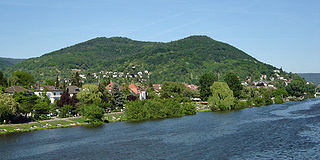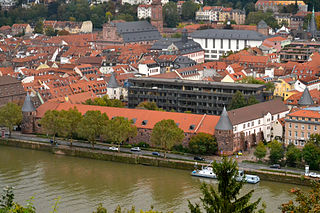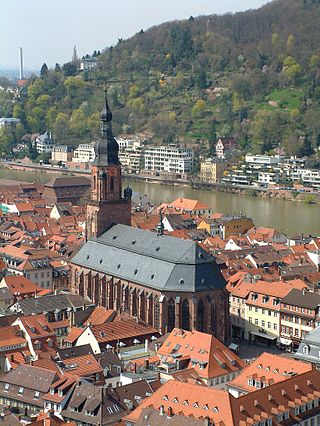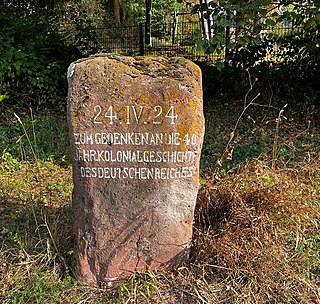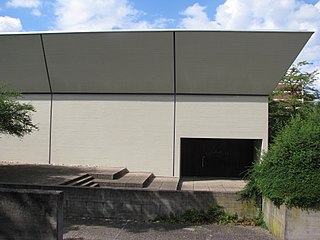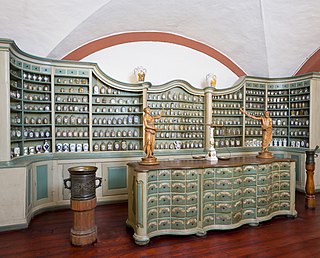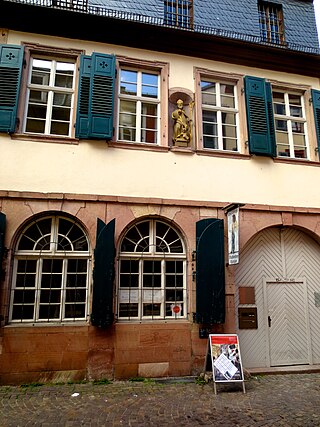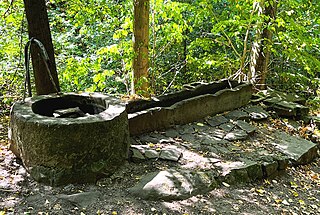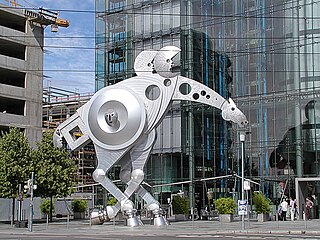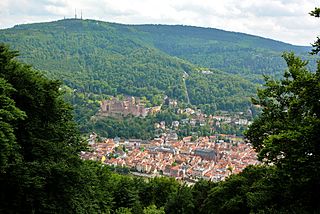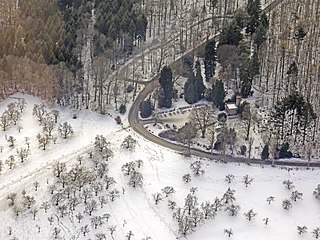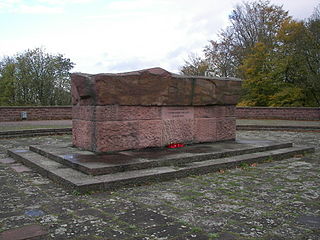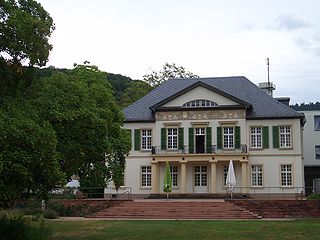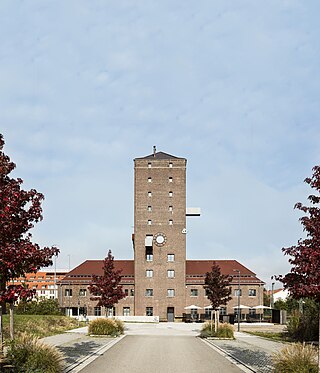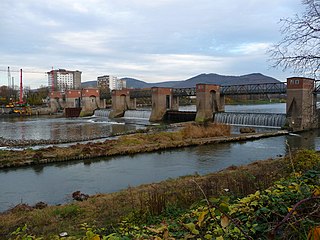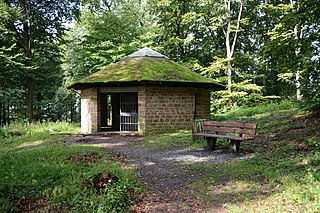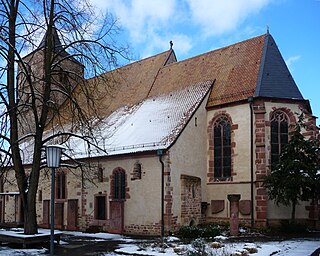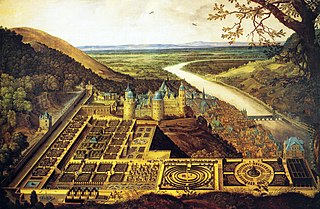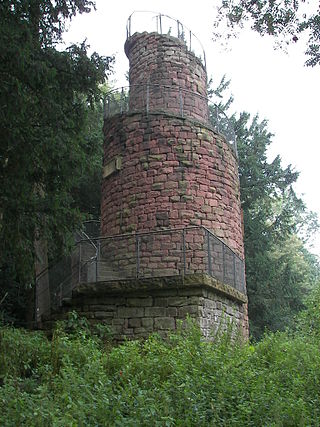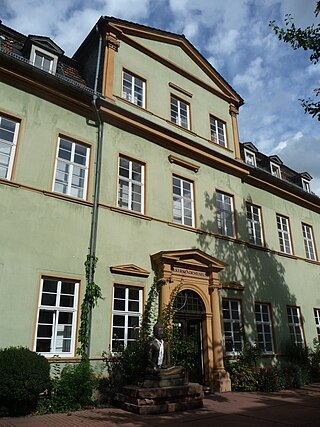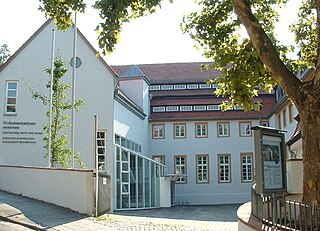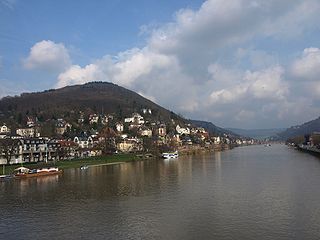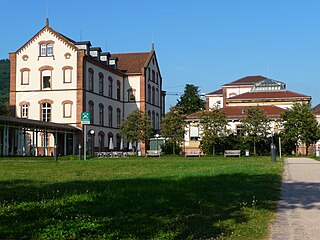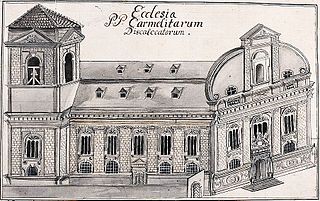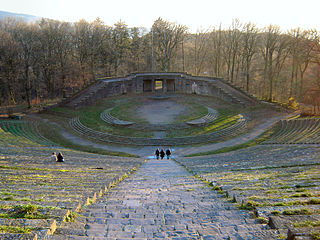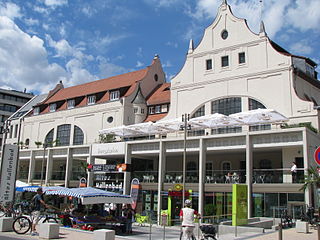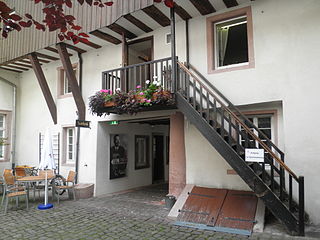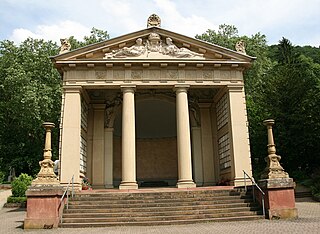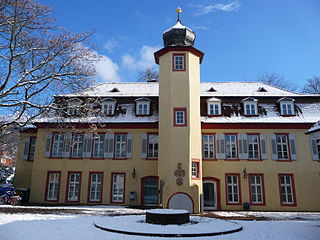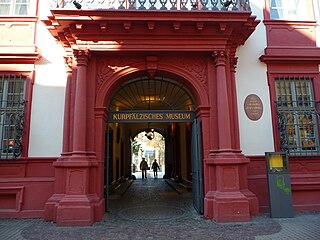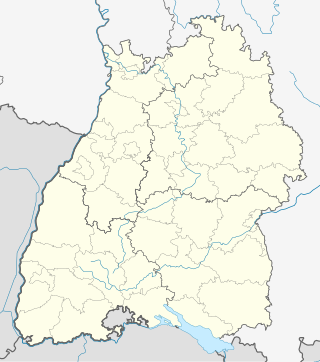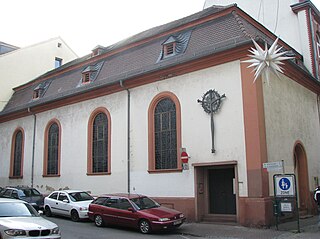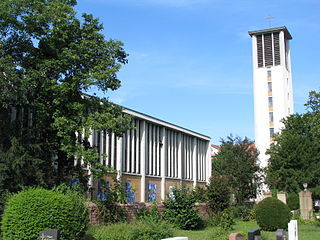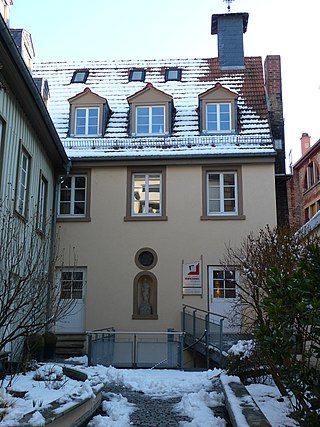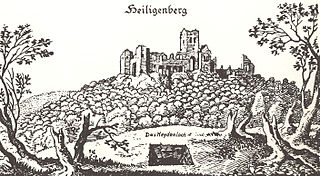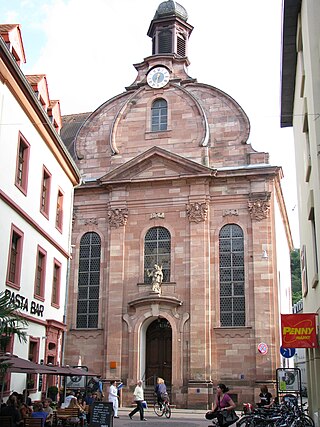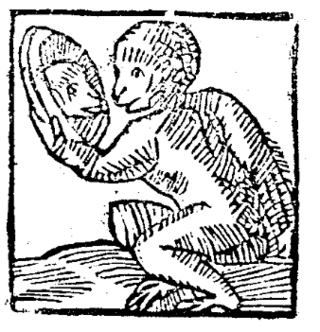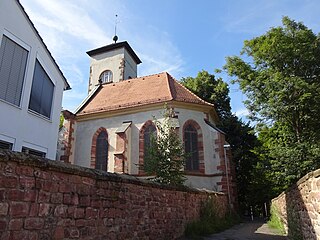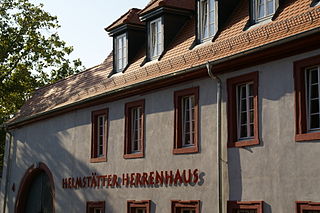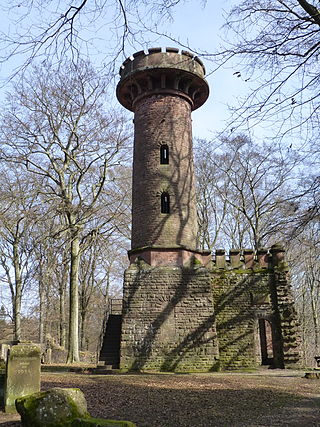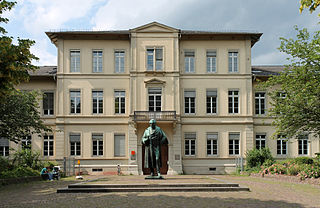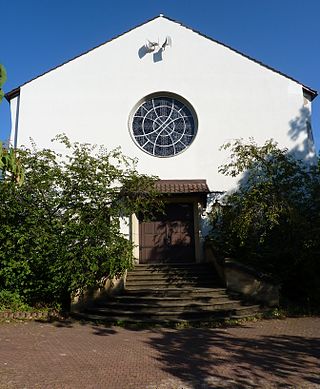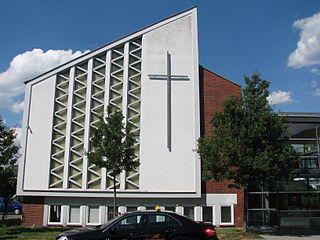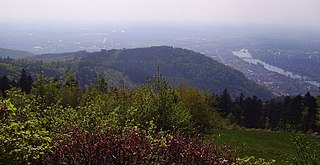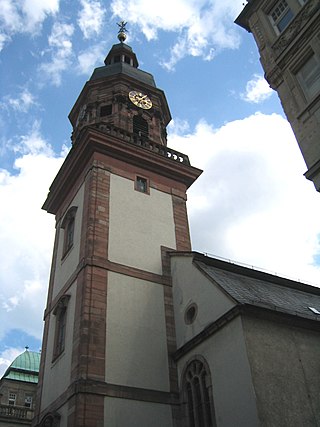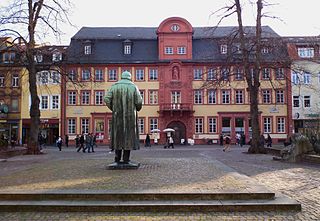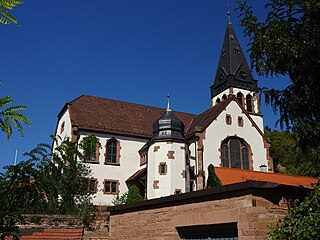56 Sights in Heidelberg, Germany (with Map and Images)
Legend
Premium Sights
Book tickets, guided tours and activities in Heidelberg.
Guided Free Walking Tours
Book free guided walking tours in Heidelberg.
Welcome to your journey through the most beautiful sights in Heidelberg, Germany! Whether you want to discover the city's historical treasures or experience its modern highlights, you'll find everything your heart desires here. Be inspired by our selection and plan your unforgettable adventure in Heidelberg. Dive into the diversity of this fascinating city and discover everything it has to offer.
Sightseeing Tours in HeidelbergActivities in HeidelbergThe Heiligenberg is a large wooded hill overlooking the town of Heidelberg in Baden-Württemberg, Germany. It rises to around 440 metres NHN. It has been the site of many historic and pre-historic constructions, including a Celtic hilltop fortification, a Roman sacred precinct, several medieval monasteries, modern lookout towers and the Heidelberg Thingstätte, built by the Nazis in the 1930s.
2. Marstall
The Heidelberg Marstall, built from Neckartäler sandstone, is one of the oldest still preserved buildings from the early modern period in Heidelberg. The building, which was now called Marstall, was originally called the Zeughaus, while the Marstall south was in a building that was destroyed today.
3. Church of the Holy Spirit
The Church of the Holy Spirit is the largest church in Heidelberg, Germany. The church, located in the marketplace in the old town center, was constructed between 1398 and 1515 in the Romanesque and Gothic styles. It receives 1–3 million guests annually, making it among the most visited churches in Germany.
4. Stückgarten
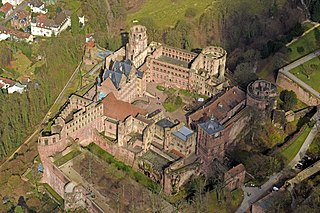
The western terrace of the Heidelberg Castle is referred to as the piece garden. The name is derived from the cannons that were set up there in the early modern period and which were also referred to as "pieces". Initially used for defense purposes, the conversion to a garden took place in the early 17th century. Access is marked by the Elisabethentor, which was created around 1615 as a gift for Elisabeth Stuart. During the usage period of the castle, there was also a bird house in the piece garden, which was later converted into an orangery, of which only foundations are visible today. Today the piece garden serves primarily as a viewpoint for the castle visitors, from which a view of the Palatinate Forest beyond the Rhine plain is possible from a clear view. The piece garden connects the castle atrium in the south with the "thick tower" in the north. To the east is a deep cut in the castle mountain of the "Hirschgraben", to the west the piece garden protrudes on steep support walls above the Heidelberg old town.
5. Kolonialstein
The Colonial Stone is a memorial stone that was ceremoniously unveiled in the Heidelberg City Forest on April 24, 1924, German Colonial Remembrance Day. His inscription: "24.IV.24 In memory of the 40th anniversary. Colonial History of the German Empire", commemorates the founding of the first German colony of German South West Africa, today's Namibia, on 24 April 1884. In the immediate vicinity is the colonial fountain, which today forms an ensemble together with the colonial stone.
6. Jesuitenkirche
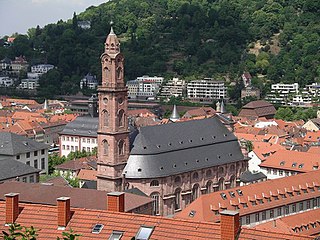
The Jesuit Church is the largest and most important church in Heidelberg next to the Church of the Holy Spirit and forms the architectural focus of the former Jesuit quarter in the old town in the immediate vicinity of the University Square. Today it is the main church of the Roman Catholic Holy Spirit parish in Heidelberg's old town. The church was built between 1712 and 1759 in the Baroque style, the neo-baroque tower was added between 1868 and 1872. The church, which is not geostet as usual, but faces south, is a "building that is as remarkable as it is unusual".
7. Sankt Paul
The Church of St. Paul in the Heidelberg district of Boxberg was built from 1970 to 1972 as a Roman Catholic parish church for the two southern mountain districts of Heidelberg, Boxberg and Emmertsgrund. The church is a listed building.
8. Deutsches Apotheken-Museum
The German Pharmacy Museum in Heidelberg is a German museum dedicated to the history of pharmacy. It has extensive collections whose exhibits span the entire German-speaking world from antiquity to the 21st century. It is located in Heidelberg Castle.
9. Historischer Studentenkarzer
The last student prison in Heidelberg's history was located at Augustinergasse 2 and served as a prison for students of the Ruprecht-Karls-University of Heidelberg. Today, it is attached to the Old University of Heidelberg as part of the Museum of the History of the University.
10. Drei-Tröge-Brunnen
The Three Troughs Fountain is a fountain complex on the western slope of the Gaisberg near Heidelberg, which is a combination of three different red sandstone troughs. Built in 1887, the facility on the Bierhelder Steige is located 100 m away from the Drei-Tröge-Hütte, a well-known rest and refuge hut in the Kleiner Odenwald. In 1984, the fountain was extensively restored.
11. S-Printing Horse
With a height of 13 meters and a weight of 90 tons, the S-Printing Horse in Heidelberg is one of the largest horse sculptures in the world, designed by sculptor Jürgen Goertz. The sculptor's idea was implemented by Fröhlich Systemautomation GmbH Sondermaschinen- und Vorrichtungsbau, based in Treuchtlingen in Middle Franconia.
12. Königstuhl
The Königstuhl, is a 567.8 metres (1,863 ft) high hill in the Odenwald Mountains and in the city of Heidelberg, in the German state of Baden-Württemberg. The Königstuhl summit allows visitors views of the city of Heidelberg and the Neckar river. On days with good conditions the view extends to the Pfaelzerwald, which is roughly 40–50 km away.
13. Kongresshaus Stadthalle Heidelberg
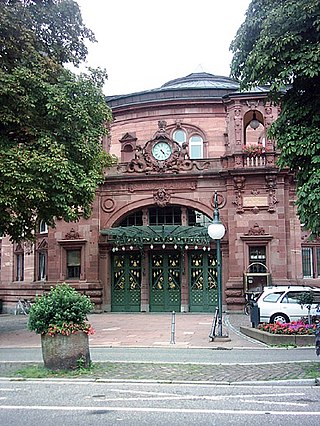
The Stadthalle Heidelberg is a congress and cultural center located in the old town of Heidelberg on the banks of the Neckar River. It was built according to the plans of the architects Jakob Henkenhaf and Friedrich Ebert in the years 1901 to 1903.
14. Posseltslust
The Posseltslust is a pleasure house donated to the city of Heidelberg by the Heidelberg pharmacist Louis Posselt (1817–1880) in his will, which is located not far from the Kohlhof. The building, built in 1881, consists of a three-arched arcade hall with a stone table, a terrace and a 15-metre-high tower with an observation deck. All three levels are connected by a spiral staircase. The historic property originally had a park with a pond and grotto. Several planted sequoias and a small monument (Hubertusfels) still remind us of this. Stairs and tower are closed on weekends for safety reasons.
15. Ehrenfriedhof
The Heidelberg Cemetery of Honour is located above the western part of Heidelberg at an altitude of about 295 metres on the so-called Ameisenbuckel above the Heidelberg Mountain Cemetery. The complex was created from 1933 to 1935 as a military cemetery to accommodate more than 500 reburied fallen soldiers of the First World War and has an area of over 17 ha. In its extension, the courtyard of the complex points to the church tower of the Christuskirche in the Weststadt.
16. Rohrbacher Schlößchen
Rohrbach Castle, popularly known as Rohrbacher Schlösschen or Altes Schlösschen, is located in the middle of the Rohrbach district of Heidelberg. It is located there in a park on the grounds of the Thoraxklinik Heidelberg on today's Parkstraße.
17. Bahnwasserturm
The water tower on Eppelheimer Straße ensured the water supply of the former railway depot in Heidelberg and the steam locomotives that ran until the 1970s. The building is one of the few surviving monuments of the industrial culture of Heidelberg's Bahnstadt.
18. Stauwehr Wieblingen
The Wieblingen weir is a weir on the Neckar near Heidelberg. It is part of the Schwabenheim barrage, as is the Schwabenheim lock at the lower end of the Wieblingen side canal and the Schwabenheim and Wieblingen power plants. It was built between 1922 and 1925 and is a listed building.
19. Heidenloch
The Heidenloch is a 55-metre-deep historic shaft with a diameter of between three and four metres on the Heidelberg Heiligenberg. It is located a few metres west of the observation tower on the road to Heiligenberg. The shaft has been a frequently described attraction since the early modern period. For a long time, it was walled in and barred by a vault. In 1936, the shaft was opened and explored in detail for the first time by employees of the Kurpfälzisches Museum. In 1987, a shelter was built over the exposed shaft.
20. St. Vitus
St. Vitus is the Catholic parish church in Heidelberg-Handschuhsheim. It is the oldest church in Heidelberg and one of the oldest churches in the region, the use of which can be traced throughout. The patron saint is St. Vitus (Veit), an early Christian martyr and one of the Fourteen Helpers in Need.
21. Schlossgarten
The Hortus Palatinus, or Garden of the Palatinate, was a Baroque garden attached to Heidelberg Castle, Germany. The garden was commissioned by Frederick V, Elector Palatine in 1614 for his new wife, Elizabeth Stuart, and became famous across Europe during the 17th century for the landscaping and horticultural techniques involved in its design. At the time it was known as the 'Eighth Wonder of the World', and has since been termed 'Germany's greatest Renaissance garden.'
22. Gaisbergturm
The Gaisberg Tower in Heidelberg is an architectural monument that stands at the transition of the small plateau of the 375.6 m above sea level Gaisberg to the northwest slope. Designed by the architect Fritz Seitz, the observation tower was built in 1876 by the Heidelberg Castle and Antiquity Association. The lighthouse of Alexandria probably served as a model.
23. Alte Brücke
The Karl Theodor Bridge, commonly known as the Old Bridge, is an arch bridge in Heidelberg that crosses the Neckar river. It connects the Old City with the eastern part of the Neuenheim district of the city on the opposite bank. The current bridge, made of Neckar sandstone and the ninth built on the site, was constructed in 1788 by Elector Charles Theodore, and is one of the best-known landmarks and tourist destinations in Heidelberg.
24. Völkerkundemuseum
The Ethnological Museum of the J. and E. von Portheim Foundation in Heidelberg houses collections on religion, art and everyday life from the regions of Asia, Africa and Oceania. Art and culture of these regions are presented in changing special exhibitions.
25. Dokumentations- und Kulturzentrum Deutscher Sinti und Roma
The Documentation and Cultural Centre of German Sinti and Roma was established in Heidelberg, Germany, in the early 1990s, as a memorial to Sinti and Roma people who were killed by the National Socialists Party. After several years of extension work collecting stories from the victims, conducting research, and conversion, the building complex was ceremonially opened to the public on 16 March 1997, and was supported by the attendance of many Roma and Sinti survivors. It is the world's first permanent exhibition on the genocide perpetrated upon the Sinti and Roma by the Nazis. The documentation Centre has three levels and covers an area of almost 700 square meters, and traces the history and stories of the persecution of the Sinti and Roma under National Socialism. The institution is overseen by Central Council of German Sinti and Roma, supported by the city of Heidelberg, and is the beneficiary of special funds from the German Federal Government and the land of Baden-Württemberg.
Wikipedia: Documentation and Cultural Centre of German Sinti and Roma (EN), Website
26. Stephanskloster
The St. Stephen's Monastery on the 375.5 m above sea level Michelsberg in Heidelberg is a monastery founded there in the 11th century next to the Michaelskloster as the second branch of Lorsch Abbey, of which only the remains of the foundations have been preserved today. The Michelsberg is located south of the Heiligenberg.
27. Sammlung Prinzhorn
The Prinzhorn Collection is a German collection of art made by mental health patients, housed at the Heidelberg University Hospital. The collection comprises over 20,000 works, including works by Emma Hauck, Agnes Richter and August Natterer.
28. Karmeliterkloster Heidelberg
The Carmelite monastery of Heidelberg was a convent of the Carmelites, with a church and monastery building, in Heidelberg. The church, which is no longer preserved, served, among other things, as the burial place of the ruling house of the Wittelsbachs.
29. Thingstätte
The Heidelberg Thingstätte is an open-air theatre on the Heiligenberg in Heidelberg, Baden-Württemberg, Germany. It was built during the Third Reich for performances and events as part of the Thingspiel movement. Until 2018, it was primarily used for unofficial Walpurgis Night celebrations. It is a protected cultural monument.
30. St. Johannes
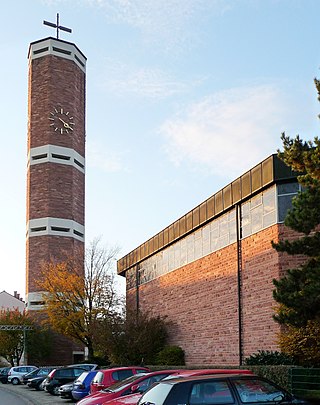
St. Johannes is the Roman Catholic parish church in the Rohrbach district of Heidelberg. It was built between 1963 and 1965 and dedicated to the apostle and evangelist John. Today, the parish of St. Johannes, together with the parishes of St. Paul (Boxberg-Emmertsgrund) and St. Peter (Kirchheim), forms the pastoral care unit of Heidelberg-Süd.
31. Körperwelten
The Old Indoor Swimming Pool is a former indoor swimming pool in the Bergheim district of Heidelberg, Germany. The Art Nouveau building, which opened in 1906, was closed in 1981. After years of vacancy, it was used for gastronomy, retail and events from 2013 to 2016.
32. Reichspräsident-Friedrich-Ebert-Gedenkstätte
The President Friedrich Ebert Foundation Memorial in Heidelberg is a non-partisan foundation financed by the German Federal Government. It commemorates the life and work of Friedrich Ebert, who was born in the house on 4 February 1871. From humble origins, he became a member of the Social Democratic Party of Germany and was finally elected as the first German democratic head of state in 1919. Faced with extreme internal and external pressures, he prepared the way for parliamentary democracy in Germany after the end of World War I. In these years he preserved national unity and made a vital contribution to the creation of a social and democratic republic.
33. Institutsgebäude
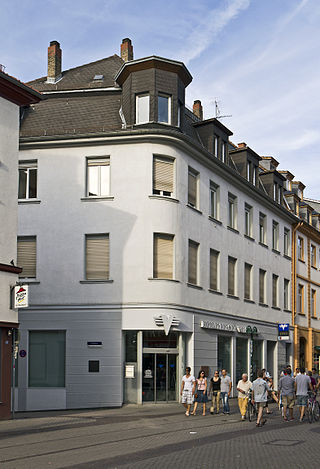
The former Hotel Badischer Hof was opened in 1780. With its central location at Heidelberger Hauptstraße 113, it was long considered the most distinguished house on the square. Among his illustrious guests was King Ludwig I of Bavaria.
34. Friedenskirche
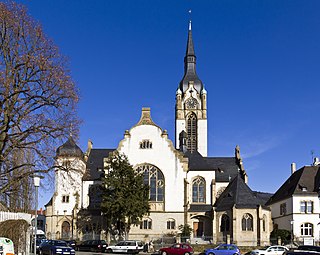
The Friedenskirche is a Protestant church in the Heidelberg district of Handschuhsheim, which was built between 1908 and 1910 according to plans by Hermann Behaghel and is considered one of the highlights of his work.
35. Krematorium
After Gotha in 1878 and at the same time as Hamburg, Heidelberg also received a crematorium at the Heidelberg Mountain Cemetery in 1891. However, it was planned from the outset not only for the needs of Heidelberg, but for the whole of southwest Germany. The establishment of a crematorium was accompanied by strong religious-ecclesiastical concerns, so that significantly, an ancient building was used here, at the time of which cremation was common.
36. Schlösschen
The castle goes back to a smaller late medieval aristocratic residence in Handschuhsheim. The listed building has been rebuilt many times and has an eventful ownership history. The oldest component is the striking stair tower from the early 17th century. The building has been owned by the city of Heidelberg since the First World War and now serves cultural purposes. The new building on the site of the former orangery of the castle was named after the painter Carl Rottmann, who was born in Handschuhsheim and whose grandfather once owned the property.
37. Botanischer Garten
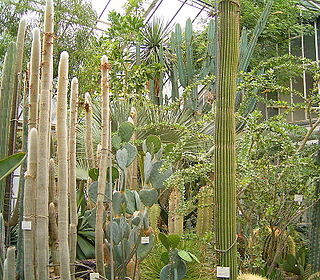
The Botanischer Garten der Universität Heidelberg, also known as the Botanischer Garten Heidelberg, is a botanical garden maintained by the University of Heidelberg. It is located at Im Neuenheimer Feld 340, New Campus, Heidelberg, Baden-Württemberg, Germany; portions are open to the public daily except Saturday without charge.
Wikipedia: Botanical Garden of the University of Heidelberg (EN), Url Official
38. Kurpfälzisches Museum
The Kurpfälzisches Museum is a museum of art and archaeology in Heidelberg, Germany. It is located in the Palais Morass. It was founded in the late 1870s, when the city of Heidelberg purchased the private collection of the artist and art historian Charles de Graimberg.
39. Lochheim
Lochheim is a desert on the northwestern edge of the municipality of Sandhausen in the Rhein-Neckar-Kreis in the administrative district of Karlsruhe in the north of Baden-Württemberg. It lies south of the Leimbach and the Landgraben and north of the large sand dune fields on a flat, grinded sand ridge on the southern edge of the Neckar alluvial cone in the Neckar-Rhine plain. The large sand dune fields south of the Lochheim desert are located in the forest area called Pflege Schönau – in which the nature reserve "Sandhausener Düne, Pflege Schönau-Galgenbuckel" is also located – in the Hardt plains.
40. Erlöserkirche
The Church of the Redeemer is a church in the old town of Heidelberg, which was built in 1723/24 as the convent church of the "White Nuns" (Dominican nuns). After the dissolution of the monastery, it was used for various purposes and is now the parish church of the Old Catholic community. Apart from the Jesuit Church, it is the only surviving of the originally numerous monastery churches in Heidelberg's old town.
41. St. Bartholomäus
The new parish church of St. Bartholomew is the Roman Catholic parish church of the Heidelberg district of Wieblingen. It was built between 1955 and 1956 because the old St. Bartholomew's Church had become too small. It is a listed building and was rebuilt from 2018 to 2020.
Wikipedia: Pfarrkirche St. Bartholomäus (Heidelberg-Wieblingen) (DE)
42. Deutsches Verpackungsmuseum
The German Packaging Museum is a special museum of cultural history in Heidelberg and has been in existence since 1997. By showcasing the cultural achievement of packaging, it is the first and only museum of its kind. It is located in a restored 19th-century "Nothkirche" in the courtyard of Hauptstraße 22 in Heidelberg city centre.
43. St. Michaelskloster
The Monastery of St. Michael German: Michaelskloster, on the Heiligenberg in Heidelberg, was a branch of the nearby Lorsch Abbey. The ruined complex that can be seen today was built beginning in 1023. The monastery was occupied successively by several religious orders before it was abandoned in the 16th century.
44. Sankt Anna
St. Anna is a Catholic church in the old town of Heidelberg, Germany. It was built between 1714 and 1717 as a hospital church and is dedicated to St. Anne. To the east of the church is the former hospital.
45. Heidelberger Brückenaffe
The Heidelberg Bridge Monkey dates back to the 15th century. It was a stone statue sitting in the tower of the Old Bridge, which was located opposite Heidelberg’s Old Town. The purpose of the tower was to instill fear and respect in anyone arriving in the town, while the monkey represented mockery. The statue was destroyed with the tower during the Nine Years' War.
46. Schlosskapelle
The Old Chapel in the former castle park of the Heidelberg district of Wieblingen serves as the school chapel of the Elisabeth-von-Thadden-Schule. It consists of remains of the former Wieblingen parish church.
47. Helmstätter Herrenhaus
The Helmstätter Herrenhaus is a historic building in Heidelberg-Handschuhsheim, Germany. The listed building, which is now used as a restaurant, goes back to the village's noble estate, whose property was linked to the neighbouring Tiefburg. After the destruction of the wars of the 17th century, the Lords of Helmstatt gave up the castle as a residence and instead built the manor house around 1700 on the site of a defunct manor.
48. Alte Universität, Rektorat
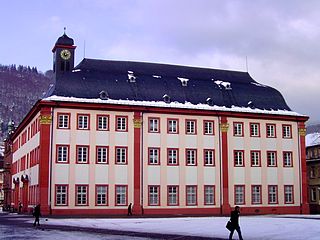
The Old University is an important baroque building of the University of Heidelberg located between the Hauptstrasse and the Universitätsplatz in the old town of Heidelberg. It contains the Hall of the University, once the main assembly hall and lecture theatre of the University, as well as the Heidelberg University Museum and the old University gaol.
49. Heiligenbergturm
The Heiligenberg Tower in Heidelberg is a 16.5 m high observation tower, which stands on the right bank of the Neckar opposite the old town of Heidelberg on the edge of the former St. Stephen's Monastery on the 375.5 m above sea level Michelsberg, a pre-summit of the 439.9 m above sea level high Heiligenberg.
50. Friedrichsbau
The Friedrichsbau, syn. Fridericianum, is a historic building at Hauptstrasse 47/49 in Heidelberg. The chateau-like three-wing property was built in 1863 for use by the Ruprecht-Karls-University Heidelberg and is located in the immediate vicinity of the Old Anatomy. Today it houses the Psychological Institute of the University of Heidelberg.
51. Chapel
The Chapel in the southern part of Heidelberg is a listed former church building. It stands on the corner of Römerstraße and Rheinstraße in the area of a former housing estate of the US Army, which is called Mark Twain Village. It was built in 1951 according to plans by the Mannheim architect Emil Serini as a non-denominational place of worship for members and affiliates of the American armed forces.
52. Hoffnungskirche
The Church of Hope in Heidelberg is a Baptist church and was built in 1963. It has borne its name since 1988. The congregation was initially served from Mannheim and became independent in 1968. The municipality also includes the branches in Allemühl, Mauer and Moosbrunn.
53. Gaisberg
Gaisberg (Heidelberg) is a mountain of Baden-Württemberg, Germany. In the 17th century, Matthäus Merian (1593–1650) depicted the Gaisberg as almost completely treeless. Today it is mostly covered in dense deciduous forest and rises above the western part of Heidelberg's old town and the adjoining western town on the edge of the Upper Rhine plain.
54. Providenzkirche
The Church of Providence is a Protestant church on the Hauptstrasse of the old town of Heidelberg. Until the union of the Protestant Church in Baden in 1821, this was the Lutheran church of central Heidelberg, while the Church of the Holy Spirit was the meeting place of the Calvinist church.
55. Institut für Übersetzen und Dolmetschen
The Haus zum Riesen is a baroque palace on the Hauptstrasse in Heidelberg, built in 1707/8. The building is named for a statue with decorates the façade. Since the middle of the nineteenth century, it has been used by Heidelberg University and several prominent academics have worked in it.
56. Melanchthonkirche
The Melanchthon Church is located in Rohrbach, a district of Heidelberg in the Rhein-Neckar-Kreis in Baden-Württemberg. The building is registered as an architectural monument with the Baden-Württemberg State Office for the Preservation of Monuments. The parish belongs to the Heidelberg church district of the Evangelical Church in Baden.
Share
Disclaimer Please be aware of your surroundings and do not enter private property. We are not liable for any damages that occur during the tours.
